Experts debunk 8 myths about sun safety
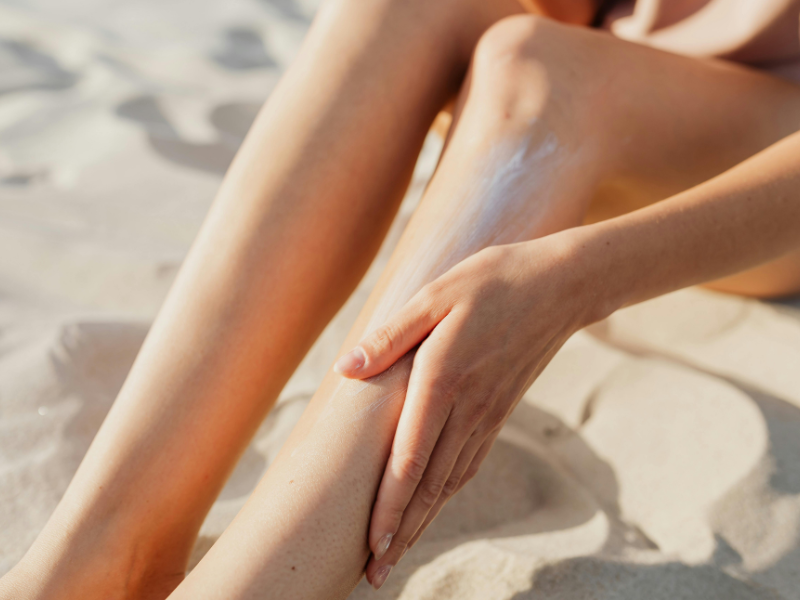
Summertime. It’s a season that we all look forward to, with ice cream, beach trips, and of course—the sun. And while it might not feel like it in the UK just yet, summer is around the corner, officially starting on the 20th of June.
It’s easy to get caught up in the latest skincare trends, but there’s one all-important item you should never forget in your daily routine–sun cream.
We all know that the sun can do some serious damage to our skin, with Cancer Research reporting that melanoma cases in the UK have increased by almost a third in the past decade.
While we know that SPF is the best solution for avoiding sun damaged skin, for whatever reason, many people are guilty of still skipping this step in their routine.
In fact, our skincare team at SmoothSkin spoke to over 500 adults in the UK to understand their most common misconceptions about sun safety and SPF, and found that 1 in 7 (13%) adults don’t think sun cream is important and only a quarter (25%) of British adults say they wear SPF every day in the summer.
Check out some of the most common sun care myths below and see the team’s expert SPF tips for keeping yourself safe in the sun all year round.
Myth #1: You can’t get sunburnt on a cloudy day

Our research found that nearly a quarter (23%) of British adults believe you can’t get sunburnt on a cloudy day!
This is possibly one of the most common misconceptions around sunburn. Although it may appear safe to go SPF-free, UV light is present year-round, and the UVA rays (which can damage our skin) can very easily come through the clouds.
You may be surprised, and wondering “should you wear SPF every day?”, and the answer is yes! The majority of sunburn actually happens on cloudy days because people don’t think they need to wear their sun cream, and this is why it’s crucial to make a habit of putting it on everyday.
If you’re unsure about how strong the sun is on a cloudy day, check the weather app on your phone. It will tell you the UV index (usually ranked up to the number 11) and give you recommendations on sun protection. Generally speaking, going outside in anything from 3 upwards should always require sun protection.
Similarly, 1 in 3 (34%) people told us they believe the sun is the strongest when it’s at its hottest. Again, this isn’t necessarily true. The UV rays are actually the strongest when the sun is at its highest in the sky, which, for the UK, is usually between 11 am and 3 pm.
Just like you should on a cloudy day, check the UV index before going outside, just in case.
Myth #2: Aftersun will repair the damage sunburn causes to skin
Worryingly, more than a quarter (26%) of adults in the UK believe aftersun will help repair the damage sunburn causes to skin, but this isn’t true.
While applying aftersun is key when looking at how to soothe sunburn, it doesn’t do much more than that. Aftersun can’t reverse sun damaged skin, but its ingredients can help ease any sunburn symptoms such as burning, dryness, or redness.
Unfortunately, by the time you’re using aftersun, the damage is already done. This is why it’s so important to incorporate sun cream into your daily skincare routine.
Myth #3: You don’t have to wear SPF under makeup
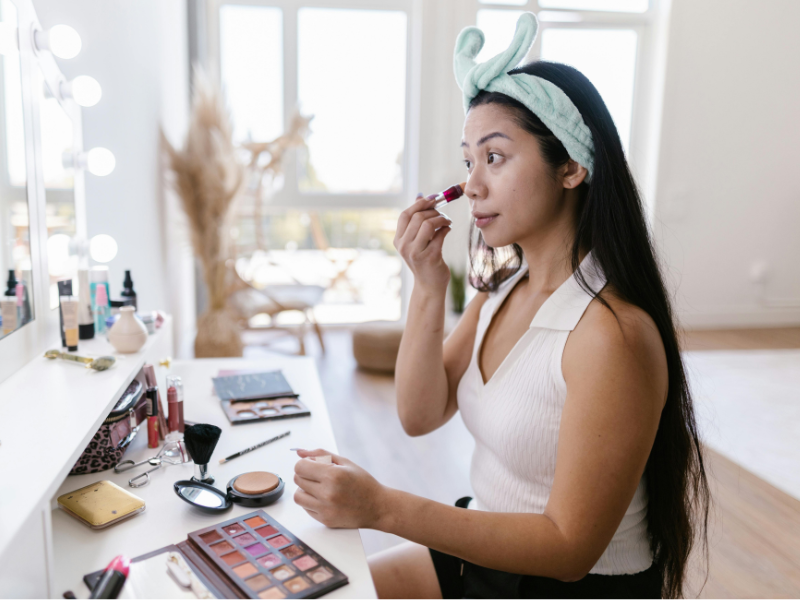
Almost 1 in 6 (14%) people think they don’t have to wear suncream under their makeup if it has SPF protection in it, however, even if your makeup contains sun cream, you still should wear SPF underneath.
This is because, traditionally, we aren’t applying a thick enough level of foundation to see the benefits of the sun protection ingredients. It’s advised that we apply ⅓ of a teaspoon of SPF to our faces—which is much more product than the standard foundation application.
If you still want your makeup to look smooth, let the SPF completely absorb and dry into your skin before applying any foundations or face products. It should only take 2 or 3 minutes to dry. Then, apply your makeup on top for a smooth and well-protected face.
Myth #4: Your skincare doesn’t affect your sun sensitivity
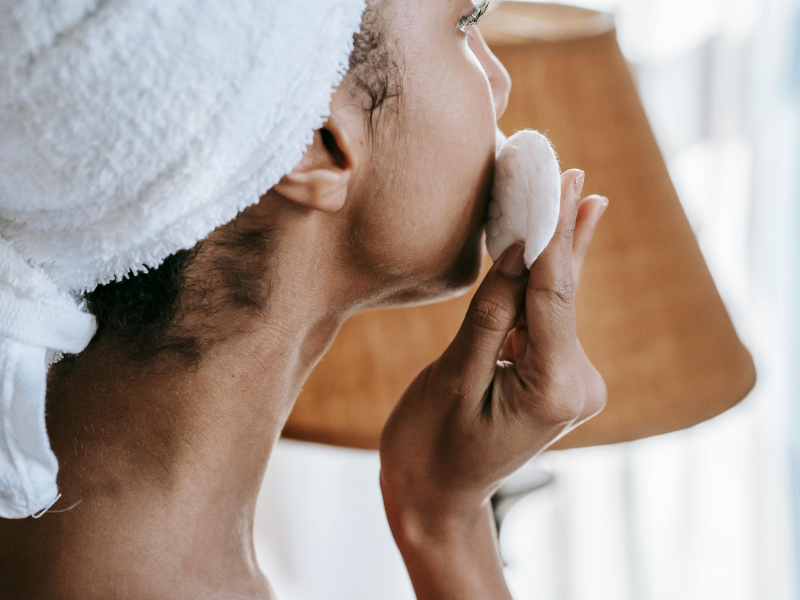
Another study we undertook of 1,000 women aged 18-50 found that just 52% always use SPF after trying new skincare.
However, there are some skincare (and bodycare) ingredients that can make us more sensitive to the sun, and thus, more likely to get sunburnt.
Beta-hydroxy acid (salicylic acid), alpha hydroxy acids (glycolic and lactic acids) and retinoids are all known to increase your skin’s sun sensitivity. So you should make sure you apply sunscreen after using any skincare containing these.
In fact, even beauty devices such as IPLs can potentially increase your sun sensitivity after use, so we’d recommend always checking instructions for any beauty products to stay safe in the sun after treatments.
Myth #5: You can’t tan while wearing sun cream
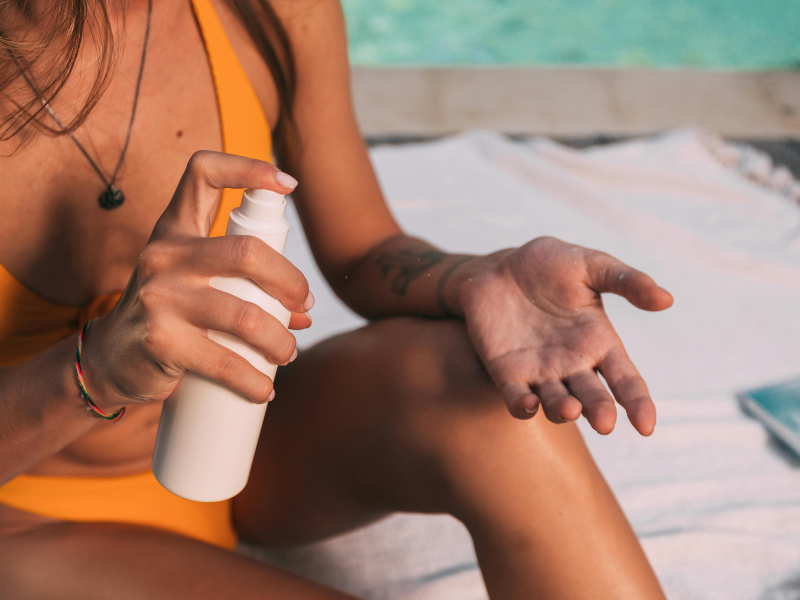
A common question asked is “does sunscreen prevent tanning?”
In fact, we found that 1 in 7 (13%) don’t believe they can get a tan when they’re wearing sun cream.
However, sun cream will not prevent you from getting a tan. This is because no SPF will protect your skin from 100% UVA radiation. For example, an SPF 30 is said to protect you from around 97% of UV rays, while an SPF 50 might give you around 98% protection, meaning you can still see some tanning when wearing SPF.
If you’re confused about how SPF ratings work—don’t be embarrassed. Nearly a quarter (23%) of adults admit to not knowing how to tell the differences.
Myth #6: People with darker skin don’t need to wear sun cream

1 in 9 (11%) of people told us they think people with darker skin don’t need to wear sun cream. But anyone—regardless of race or skin colour—is at risk of sunburn.
However, what sunburn looks and feels like will differ from person to person, depending on their skin type and colour. For people who have lighter skin, sunburn usually appears as red, peeling, sore, or swollen. In comparison, sunburn on darker skin might not appear as a change in skin colour, but their skin still might feel itchy, tender, or sore.
Our team also found that 1 in 9 (11%) Brits said they don’t mind getting sunburnt because it turns into a tan, but sunburn should not be taken lightly.
While sunburns may ‘turn into a tan’ on certain skin types, the damage of your initial sunburn increases the chances of developing skin cancer, hyperpigmentation, or photoageing (premature ageing to the skin).
Myth #7: Sun cream is more important for children than it is for adults
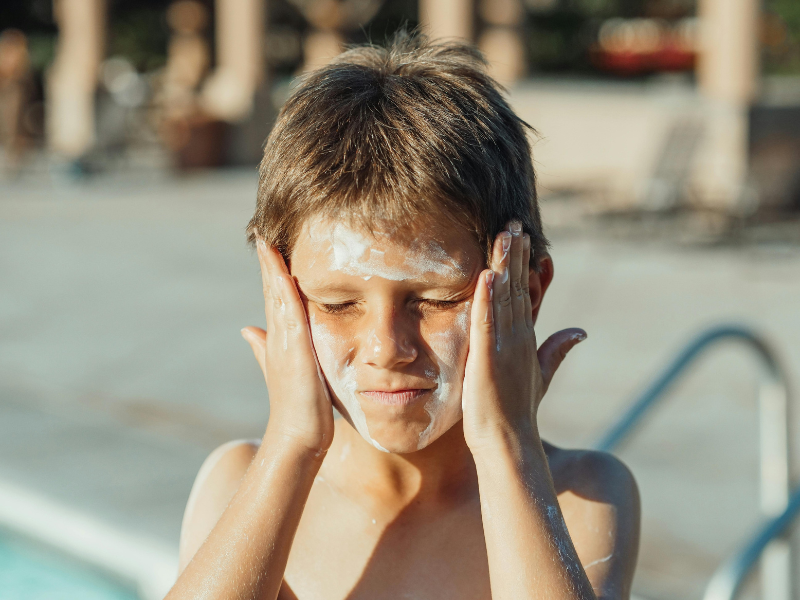
Two-fifths (42%) of people think sun cream is more important for children than it is for adults. While this may feel true, it isn’t this simple.
Children and babies do have more sensitive skin than adults, and skin damage in childhood is actually one of the most important causes of skin cancer in adults, so it’s understandable why many may think sun cream is more important during childhood.
However, SPF is beneficial to everyone, regardless of age, as a protection from skin cancer and premature aging.
Myth #8: You don’t have to reapply water resistant sun cream after swimming

There truly is no better feeling than jumping into a pool to cool off on holiday, or perhaps spending some time with the kids in a garden pool in the summer, but when we’re in and out of water in the summer months, we’re posing a risk to our skin becoming sun damaged.
Around a quarter (23%) of adults believe that they don’t think they have to reapply water-resistant sun cream after swimming or being in water. What’s more, another 3 in 10 (30%) people told us they don’t ever top their sun cream once applied.
However, all sun cream should be applied—and more importantly—reapplied frequently, especially after you’ve been in the water.
But, how long does sun cream last? to ensure the best protection, apply your sunscreen 20 minutes before going outside or into water, and straight after exiting the water, even if it claims to be ‘water resistant’ or ‘waterproof’. Even if you haven’t been in the water, you should re-apply your sun cream every two hours.
How can I improve sun damaged skin?
Sunburn increases your chances of hyperpigmentation and or premature ageing to the skin, in fact our recent survey of UK women found that almost two-fifths (38%) experience more hyperpigmentation during the summer months–most likely due to their increased sun exposure.
But there are ways to help improve these effects of sun damage. Skincare ingredients that increase cell turnover, such as retinol, glycolic acid and vitamin c, can all be used to help brighten the skin and reduce these impacts.
*Research conducted via a 3Gem survey of 500 UK adults (18+) between 10th and 14th June 2024 and a survey of 1,000 UK women (aged 18-54) between 18th and 21st February 2025.
